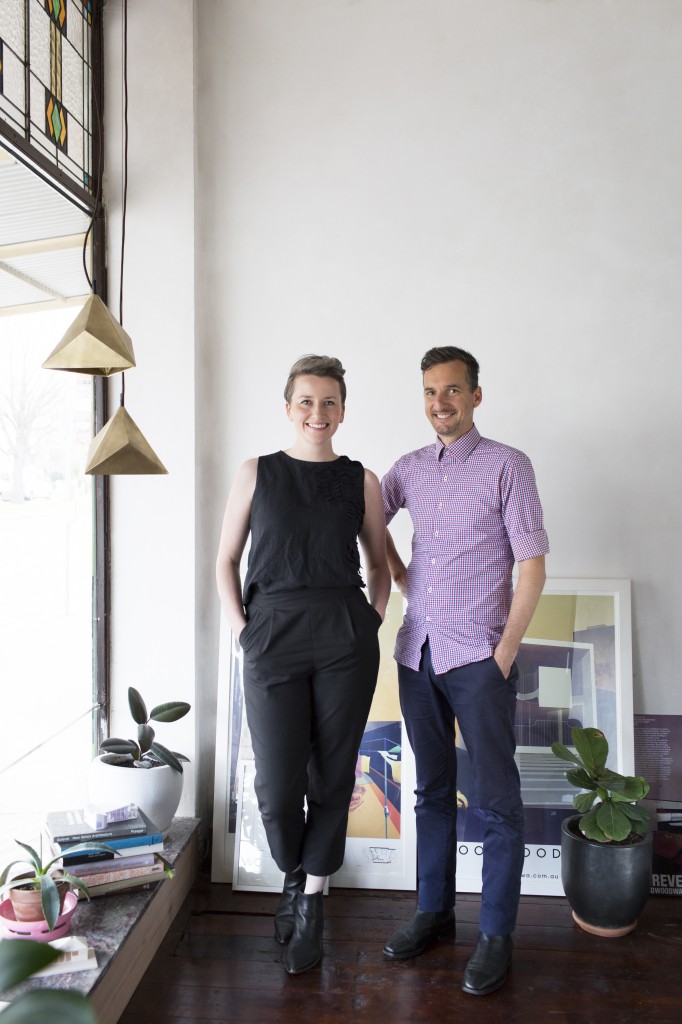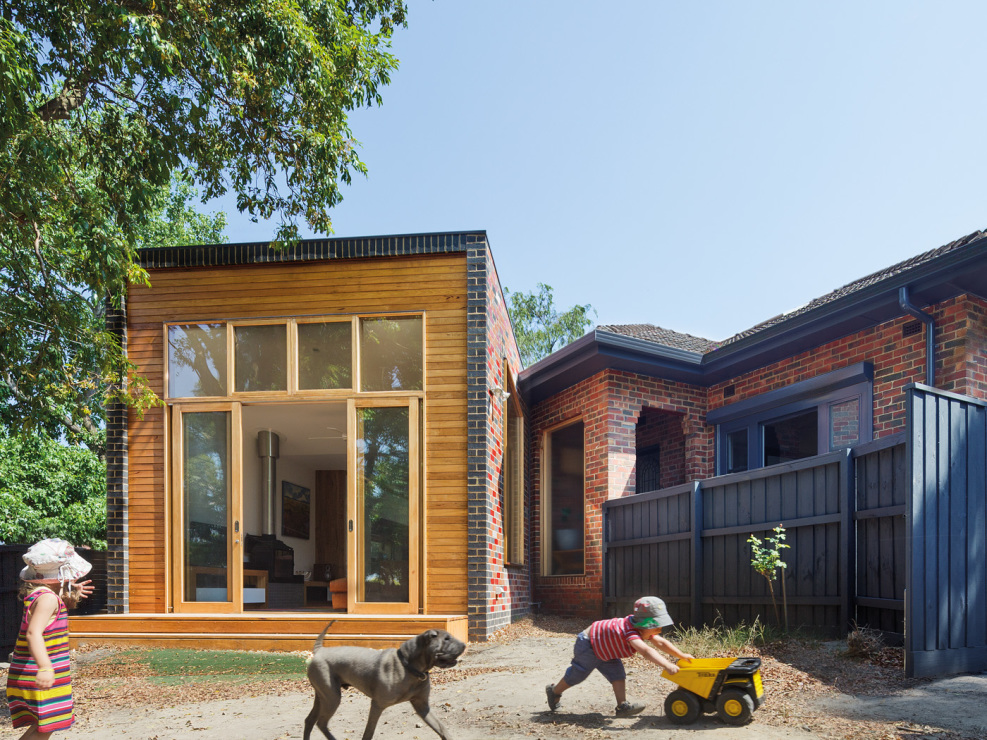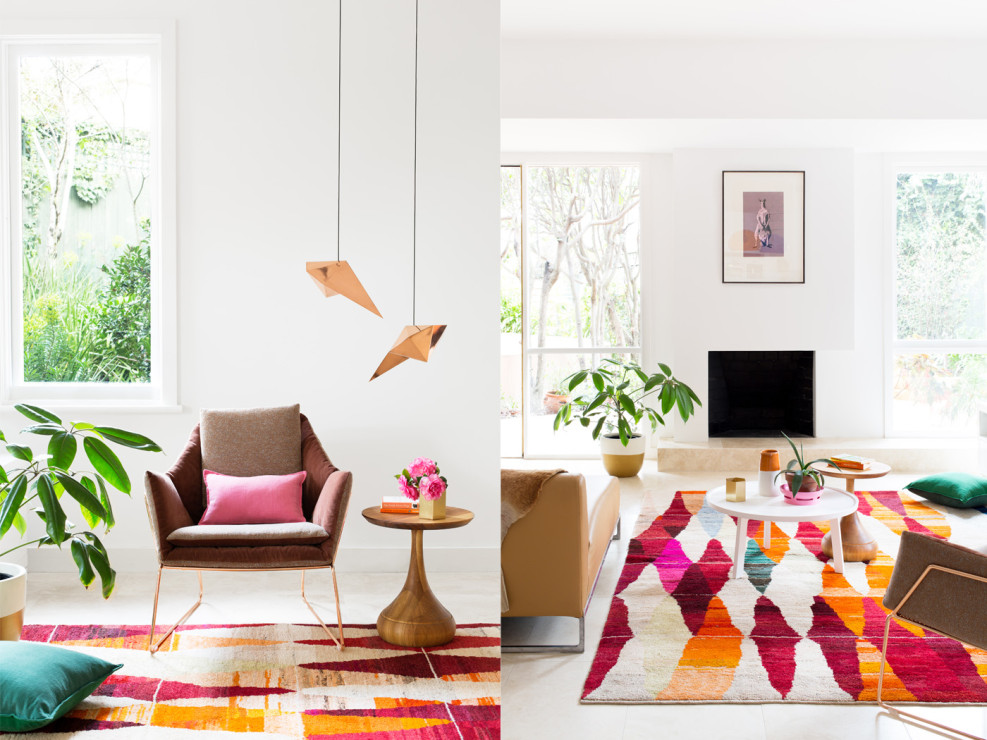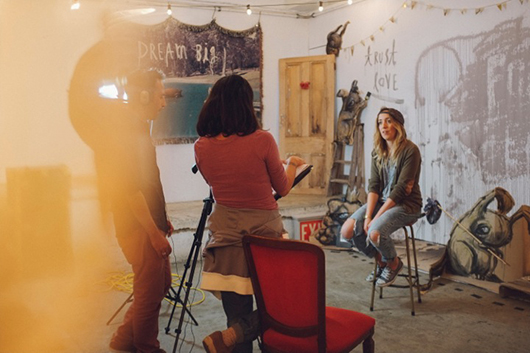Learning leadership
In the first two posts within this leadership series, we considered how leadership is a flexible concept that has changed over time, and explored reasons why creative practitioners may be reluctant leaders. This third post discusses how we can learn to be leaders when working in or running creative organisations.
When many of us consider “learning,” we immediately think of courses and programs facilitated by experts in the field. In recent years, there has been an explosion of leadership courses and books, both academic and professional, many of them aimed at those working in the creative sector.
But developmental programs, workshops, and tertiary education can be expensive and, for many in the arts and creative industries, out of reach. While there are professional development grants available from government funders such as the Australian Council for the Arts, they are few and far between, not to mention highly competitive.
How to learn leadership (on the cheap)
What alternatives, then, are there to formal development? Management research shows that on-the-job experience—such as jobs, work-based hardships, and special projects—is the most useful for leadership development. This correlates with my research, which shows that creative workers learn leadership primarily through practice. Importantly, however, it is our collaboration with others that builds the most effective leadership capacity and understanding. When we engage professionally with peers, we participate in a process known as “social learning.” Traditionally, learning was represented as the transfer of knowledge from experienced practitioner to novice learner. Social learning, however, explores how learning relates to the social environment. This approach sees learning as a collective activity, where knowledge is not acquired or passed on from one individual to another, but developed through participation in shared activity. Through collaboration we learn what it is to be a leader within our specific community.
Learning leadership through practice
Even if the most effective way to learn leadership is through social engagement, work, and practice, you can’t just sit back and let leadership "happen." To maximise your capacity to build leadership knowledge, understanding, and skills, you need to be aware of what social learning is and how it can benefit you. Here are a few strategies that might help:
Participate in social learning through professional work or individual creative practice.
The number one way to learn creative leadership is to collaborate with other practitioners. For some, this comes with the job, working in teams to achieve mutually defined goals. (Yes, all that group work at Uni was for a reason!) If you are a solo practitioner, you can still get involved in collaborative projects in the creative community. Think about joining a co-working space, or getting involved in local groups that provide opportunities to learn from (and share with) your peers. Forums like Creative Women’s Circle are perfect for meeting like-minded people; be proactive and put out the call. Other examples include knitting groups and writing groups that share feedback or evening art sessions. Once in these environments, test out your leadership skills by sharing ideas, exploring group dynamics, and teaching others. You might not recognise it at first, but these environments will give you confidence to lead in more formal settings.
Explore different kinds of leadership and then embrace the style that supports your practice.
A key factor in the development of creative leadership is the ability to lead in a way that aligns with your creative practice. To do this, you must learn about leadership. Observe the leaders around you: the good and the not-so-good. Read books and, if you have a chance to participate in a program, go for it! But observe with a critical eye. Beneficial development expands the idea of leadership and adjusts for personal approaches rather than projecting an idealised set of behaviours.
Create space for personal reflection.
Leadership reflection is the ability to relate theory back to personal experience. Consideration of past experiences may offer new perspectives when coupled with an expanded idea of what leadership looks like. Take the time to consider your role as leader and how it relates to your work and creative practice. Think about key experiences—both positive and negative—and what you learned from them. Consider those around you who are role models and what makes them good at what they do. But refrain from personal judgement, understanding that there is no perfect leader.
Share your leadership stories and learn from others.
Through the sharing and co-construction of stories, and exposure to role models, emerging leaders are exposed to new leadership ideas that take creative leadership from the theoretical to the personal. This means we need to hear a diversity of voices speaking about creative leadership. Moreover, it is important for emerging cultural leaders to be exposed to more than just stories of success from established leaders. Hearing about struggles and failures paints a more realistic picture of what it is like to lead in the creative world. If you can tell your story, do so with gusto.
If you’re an organisational leader, understand your role in developing others.
Lastly, a tip for those who run their own creative organisations or manage others: just because you may not have the resources to send staff on training programs doesn’t mean you cannot contribute to their leadership development. Organisations have the power to create learning through job structure and a focus on learning through experience. In addition, organisational leaders can encourage social learning by creating space for dialogue in meetings, encouraging collaborative work through projects, and through physical workplace design. Developmentally oriented organisations focus on how learning helps achieve organisational goals without having to pay consultants for expensive training programs.
There’s so much more to learning leadership than understanding a set of requisite behaviours that will turn you into the perfect leader. For creative workers, learning leadership involves the melding of creative practice and leadership opportunity in a way that provides a safe, enjoyable space for learning.
Kim Goodwin is an academic researcher and arts manager with a background in leadership, human resources, and career development. Since leaving her corporate career, Kim has focused on building understanding in how creative leaders are developed while working in a variety of arts organisations and academic environments. She can be found on LinkedIn, or follow her on Twitter (@KimAroundTown).
Studio Visit: Monique Woodward, architect
 It’s not often on just hearing a name that you get such a strong sense of the dynamism behind a creative duo, but this is just the case with WOWOWA (implied!) whose co-founders Monique and Scott Woodward forge a next-generation approach to architectural practice with a kind of positive charge often missing in professional creative circles.
It’s not often on just hearing a name that you get such a strong sense of the dynamism behind a creative duo, but this is just the case with WOWOWA (implied!) whose co-founders Monique and Scott Woodward forge a next-generation approach to architectural practice with a kind of positive charge often missing in professional creative circles.
In WOWOWA Architecture & Interiors, the pair have created the kind of practice they always wanted to work in, one that prioritises artistic expression, teaching and advocacy as essential to ongoing creativity. Alongside partner Scott, Monique is a vocal advocate for improved living standards and accessibility of quality design as a tenet of modern Australian culture.
From their glittering Tin & Ed business cards to the bold glazed red brick façade of the Finn House, WOWOWA is unafraid of a playful nod to the kitch, and their declaration of a radical postmodernist style is one beautifully tailored to bring a fresh optimism to the architecture of the everyday – the humble family home. We spoke to Monique at WOWOWA’s shopfront studio in Melbourne’s leafy Carlton North about her passion for celebrating Australian culture and why more creatives should embrace the power of marketing.
As an emerging practice, WOWOWA has a strong brand and clear creative directive – what inspired that focus and how has it shaped the way you practice?
One of the biggest challenges we faced initially as a fledgling but ambitious creative practice was acknowledging that even if you were the greatest architect in the world, you need to be able to run a sustainable business to keep up that practice, and to successfully market yourself is a big part of that business’ success.
I undertook a marketing course at the local TAFE and we engaged a business coach, really immersed ourselves in marketing, read a lot of business and marketing literature alongside our favourite design journals.
We quickly realised that what we were saying to the world though our marketing - that we could do anything – was out of touch with the reality of our work at the moment. Whilst we do have a few small civic projects on the go and really enjoy the possibilities of larger scale projects, our current built reality is residential. Luckily, we love residential work, and it’s a big part of who we are as a practice, so it was important to acknowledge those roots and really emphasise its part in our core identity.
From this we developed a strategy that allowed us to focus in on the kind of clients we love working with – those who want to create their ‘forever home’. They’re committed to a place, and are prepared to do some soul searching, and explore what it is that they really want from a home environment.
Putting ourselves out there as a practice for professional families, with the tagline 'life is too short for boring spaces', we’ve found that people that subscribe to that will instantly recognise a kinship, and might know a little more of what to expect from us in the process. We can then work together and really bounce off each other in a super collaborative way. This makes the process a whole lot more enjoyable for both parties.
Image by John Gollings
How has this focus on creating a client’s ‘forever home’ influenced your work?
It gives us license to work with our clients in really rewarding creative depth, to find out what they think about colour, sculpture or pattern, and taking that through to find out how flexible and functional spatial solutions can work for them. I think that's one of our strengths, making small spaces work hard, and that's one of the reasons we love renovations, the challenge of really cranking up an existing space and making it truly multi-purpose.
Focusing on the small scale also allows us to really immerse ourselves in the application of the theory and art of creative practice. One thing is I’m a massive sucker for ornament. Ornament, in its three dimensions, really changes the way you perceive a space, and I think that's when a space really starts to get interesting.
What is your motivates you creatively?
My all-time favourite design inspiration has to be the humble Hills Hoist – there is so much ingenuity and kitsch beauty in perhaps undervalued elements of Australian design history that are ripe to be to explored creatively.
We see ourselves as a radically postmodern practice, propelling ideas forward to a new audience. Current trends suggest people are trying to revert back to modernism, and I find that quite unnatural, to be attempting to wind the clock back, and instead of creating spaces for living now, there is this tendency for blank spaces and miscellaneous design solutions; a blank floating shelf, a picture window to a non-descript view.
Society is always moving forward, and new technologies challenge the idea of the modernist home. We pride ourselves on not getting caught up on finicky modernist details but still having a very deep focus on embedding meaning in the quality of the interiors we create. We don’t necessarily prescribe what kind of curtains you should have, but we demand a high level of client engagement, that is often so rich that at the end of this day you can guide each other to the best solution for that space.
The nature of the construction industry means design and building programs can often stretch out over several years - how do keep up the creative energy between both clients and yourselves throughout that process?
From the very outset, we ask that our clients engage heavily in the design process, usually starting with inspiration scrapbooks, a simple cut and paste! Often in a 50c book or using sites like Pinterest, we get them to collect things from all kinds of sources, not just completed projects in design magazines. We want them to let us in on who they are, and the more information they can give, the greater depth of engagement we can have and the better the project outcome will be.
From a practice point of view - Mel (Bright) spoke at a recent AIA women's day breakfast about how there’s only really been three cycles of work in her ten years of practice, which is I think is an experience shared by many architects. It feels like we're about to hit our second cycle, which makes it exciting to see the development in our work and be proud of what we've achieved so far.
Image of Kooyong apartment by Martina Gemmola
How have you tailored your practice to allow ongoing teaching and community advocacy commitments alongside your design projects?
From the outset we wanted to create the studio that we had always wanted to work in, and one that would allow us to grow into as a practice. A lot of questions arose of what was important to us as a practice; it's collaborative, its deep in discussions, surrounded by plants, and embedded in the local community. We work fairly solidly from 9.30-5.30pm, respecting the workday, but recognise that we while could work till 10pm, it comes back to practicing what you preach - you can’t advocate to increase the standard of living and then work yourself to the bone in the process.
It means we’re able to maintain a lot of energy in the studio throughout the day, which is slightly more optimistic than spending half an hour on The Age website at midday then having to work late into the night. I’m reading managerial books and trying to look beyond being just technically good at what we do, because that doesn’t mean we're necessarily good managers or business owners, but we can be, so it's a skill that needs to be learned side by side with design.
We also implement 'cultural Sunday' which is to make sure we do something that a) recognises it's important to make time to experience new things to keep that fire of creative inspiration burning and b) can be instagrammed, so yes, we’re always looking for the marketing tool!
Keely Malady is a graduate architect living in Melbourne. Keely’s blog, Small Talk & Co. aims to hold a space open for a new conversation on the wonders of work, and all the small things that make up a life well lived. Follow her on Twitter, Facebook and Instagram
Studio visit: Hayley Welsh, Street Artist
By Kristen Marano
Perth Street Artist Hayley Welsh works out of her home garage, but there’s nothing garage-like about it. Welsh has created a space that reflects every bit of who she is: a street artist, traveller, and family person.
Travel trinkets—mostly American flags from her school bus project —adorn shelves; colourful patterned rugs keep out the cold, and a refinished wood grain table lines the back of the room. Welsh has neatly organized a corner of paintbrushes and paints; vintage picture frames lay stacked on the floor, and the main garage wall is covered by floor to ceiling canvas and butcher paper for Welsh to sketch and paint on.
I met Welsh at her exhibition Hijacked, a collaboration with her partner and Photographer Andy Faraday. We recently caught up on a Friday afternoon to chat about her creative process, and how travel has influenced her work…
Describe the process of developing Hijacked and your choice of materials.
The whole thing was about seizing control of the situations that come to you and try to make the best out of things. It’s a belief that both Andy and I mirror in our work: try to seize what’s happening in your life.
I guess I looked at things I had been collecting, the ones that spoke to me that I could use to portray this ‘hijacked’ message. I had a collection of articles I was going to work on; Andy had been shooting his work in film and developing it. So, before the show we sat down, and I looked at works that Andy felt like that he would be happy for me to work on. I talked about pieces that I could see something happening. We wanted to create a show that we’d like to go see: sculpture, installation, a mixture of stuff and experiences. We tried not to make it a clinical and typical gallery space and more of an experience.
Describe the moment when you knew you wanted to create an exhibition about fear.
I was kind of dissecting what I was already creating. Figuring out what was I making, and what these creatures were. I realized it was all this recurring self-doubt.
When I held, Not You Again, which was a show about dealing with self-doubt, I read a book called, There’s Nothing Wrong With You. It was about how self-doubt and fear spreads to you from an early age. I thought it was interesting, and it explained a lot about why I feel the way I do. After reading that book I felt inspired that I wanted to explore that feeling.
How do you use this space to create?
I’ve been painting portraits a lot, and using this mirror to draw my reflection. My mood changes a lot in this space, and this wall can dictate the mood I’ve been in.
I don’t come into the studio until I’m ready to paint; I never enter the studio before lunch. It’s always messy before a show. Everything is pushed to the side, and everything I want to shoot is on the floor. “I’m always jumping from my computer to paint,” Welsh says with a laugh.
How has travel influenced your work?
Travelling is such a massive part of feeling empowered and meeting new people. I find you just get richer and richer in your experiences; you broaden your mind so much more. I can’t imagine my life without having travel being a big part of it. Travel has given me the kind of confidence to keep challenging myself, and keep stepping out of the comfort zone. We create better things when we are challenged.
That’s what I found with the school bus project a year ago. We had a show organized in New York, and we didn’t have the work for it. We decided to create the work while we were there. We bought a bus on the west coast, travelled to east coast, and I found whatever objects. I had a lot of self-doubt like what am I doing with my life? Why are we in a bus? But, I loved every second of it. All these emotions created that body of work.
What’s next?
Welsh had told me, “My dream would be a warehouse where I can relax, invoice, do admin stuff.” Maybe her dream is about to be fulfilled. Welsh and Faraday will soon host Not Another Open Studio, an invitation to join the duo in their new studio and see their new work in progress. Visit www.welshandfaraday.com to follow what they're creating.
{Title photograph by Kristen Marano}
Kristen Marano is a writer living in Perth, Australia. Kristen interviews women in business and writes about workplace culture. She contributes to Huffington Post Canada, and produces a weekly newsletter, Creative Women Weekly, featuring stories of creative women from around the world. Follow Kristen on Twitter @kmarano and Instagram @krismarano.
Tools of the Trade: Belinda Evans & Alchemy
By Brianna Read The interview for this first chapter in the second volume of Tools of the Trade raised two particularly pertinent topics for the wonderful platform for discussion that is the Creative Women’s Circle: social media and collaboration. I shall return to these topics shortly, but let me introduce the subject who brought these to the fore… Belinda Evans is the creator of Alchemy, a beautiful label and online store which I admired long before I crossed paths with Belinda herself.
My reason for this admiration was that this tiny little nook, in the vast ocean of online stores, managed to cultivate an extraordinary air of calm. As anyone who has lost their way while navigating the information superhighway will understand, calm is not something you happen upon very often. I mention this particular quality because Belinda’s extraordinary talent lies not only in her hands which craft each beautiful, thoughtful product you find in the Alchemy store, but also in her ability to create quiet space and genuine connection in the arena of online shopping and social media.
How, I wondered, has this woman stayed so true to the ethos of her slow, calm, creative practice while building a tiny empire and devoted following in the chaos of online?
Belinda spent her childhood surrounded by a wonderful array of tools: lathes and pottery wheels were both things she was encouraged to try and with a glass blowing studio and furniture making workshop at her fingertips it would seem a natural progression for such a childhood to lead on to a practice such as that displayed at Alchemy. But not without an invaluable step in a different direction…
Belinda also works in the field of project and event management and it is her experiences using social media in this environment which she credits with developing the skills that have proven invaluable in the development and management of the online presence of Alchemy. Take a quick look at the Alchemy blog or her Instagram posts and her genuine enjoyment of this media is wonderfully apparent. Her beautiful blog for Alchemy has a quiet sister in the blog titled Simple Things which Belinda dedicates to displaying images of a wide spectrum of design works which catch her eye and entertain her mind. Belinda says of her sharing ‘I’m not shy about sharing my techniques, how I source my materials, and the beautiful work of other artisans that I love to surround myself with.’.
This leads me to the second topic of collaboration. I recently read an article posted on Li Edelkoort’s Trend Tablet authored by Peter Stitger and to borrow his words ‘We are leaving an individual era behind us.’ This article continued on with a brief treatise on the merits of collaboration and fostering creative environments which work on the premise of camaraderie with the sharing of tools, knowledge and creativity at the center.
Belinda has exactly this approach to her practice, take one look at the beautiful photos of Belinda using indigo dyes for some of her new projects below. Taken by Olga Bennett, these photographs showcase the talents of photographer and subject in equal measure, a perfect example of the beauty of collaboration. This appreciation for the talents of others is one of the defining characteristics which make Belinda’s online voice so pleasant to listen to. In a time which seemed to favour the loudest and most shamelessly self-promoting voices, stumbling across Alchemy and then crossing paths with the quiet collaborator herself was equal parts breath of fresh air and renewal of faith in social media platforms. Belinda, thank you!
Belinda's blogs can be found here and here. Her lovely escape from the world store is here and to find her on Instagram she is known as: @iamalchemy...
Brianna Read is a designer and maker based in Melbourne. Her knitwear label Jack of Diamonds employs traditional hand-made techniques in combination with machine knit technologies. Her multi-faceted creative practice encompasses design, production, works for exhibition and machine knitting workshops.












